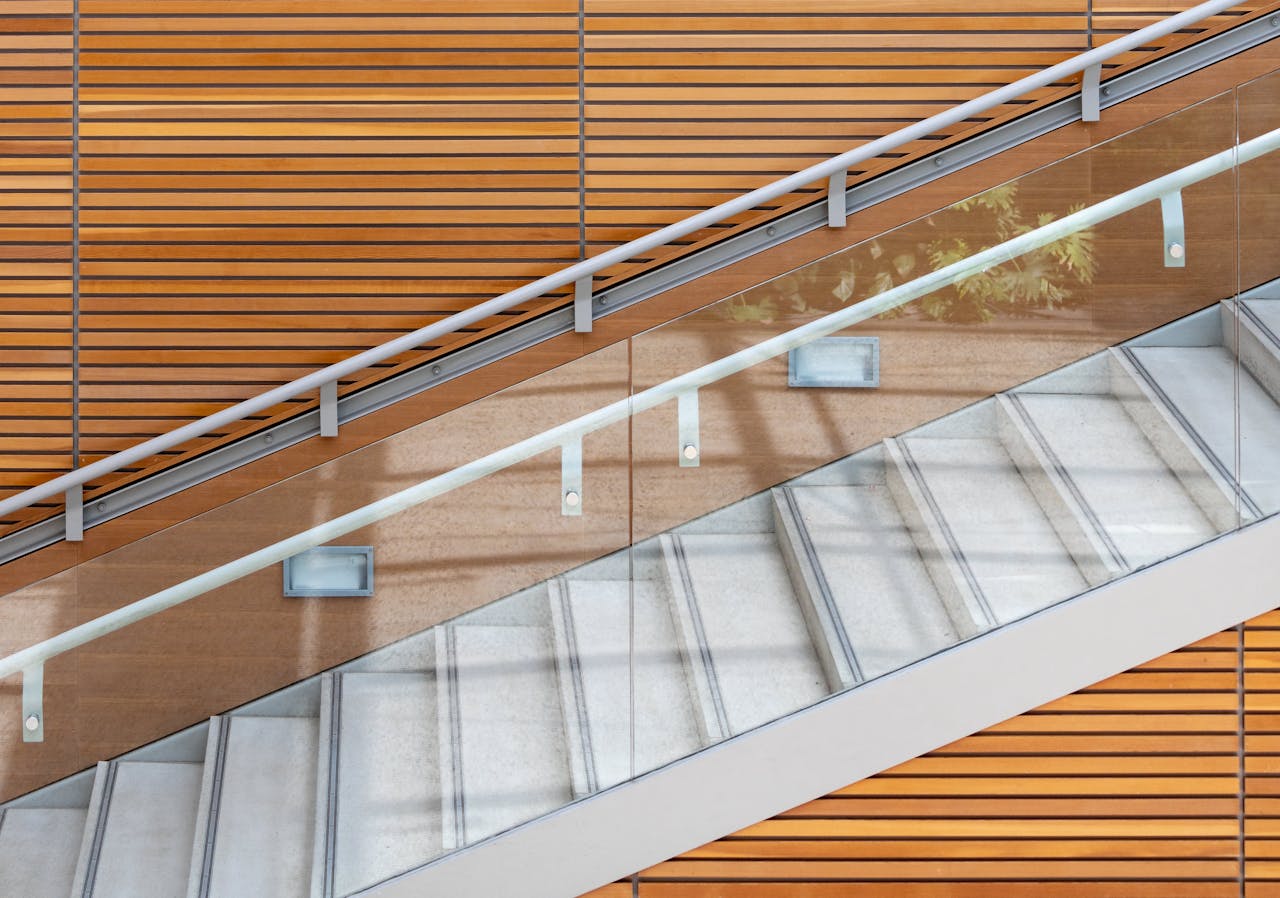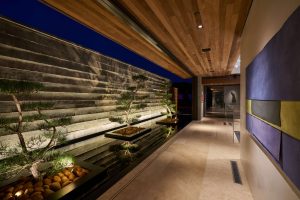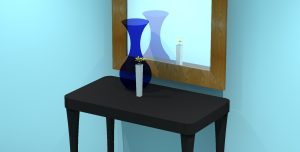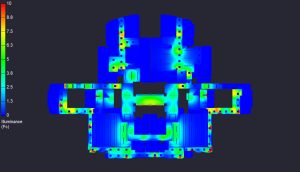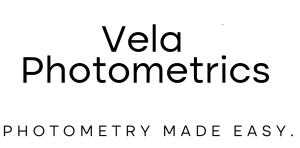Relating material properties to light source properties, location, and orientation can maximize the luminance of specific areas. The following light reflectance value (LRV) contrast levels between adjacent materials may aid in meeting specific luminance contrast design objectives in a variety of natural and artificial light settings.
For Accessibility, Safety, and Navigation
A minimum contrast of 70% between adjacent surfaces (such as floors and walls or door frames and walls) can help the visually impaired and is considered ideal by the Americans with Disabilities Act (ADA). Such minimum can act as a strong safety feature when applied to handrails and stair treads or nosings. (Legal Information Institute, n.d.)
For General Lighting and Interior Design
While purely up to the designer’s emotional and decorative goals, creating contrast differences of about 30-50% between surfaces such as walls and trim or floors and furniture generally creates nice visual distinction without being too harsh or jarring.
Calculating LRV Contrast
Vela Photometrics offers a luminous contrast calculator here.
Note: Other material properties, such as reflection type (diffuse vs. specular), surface normal variations (such as bumps and scratches), and transmittance are also worthy of consideration, as they can affect visual results (Moeck, 2000).
References
Legal Information Institute. (n.d.). Appendix to Part 38—Guidance Material. Cornell Law School. https://www.law.cornell.edu/cfr/text/49/appendix-to_part_38
Moeck, K. (2000). Lighting design based on luminance contrast. Lighting Research and Technology, 32(2).
